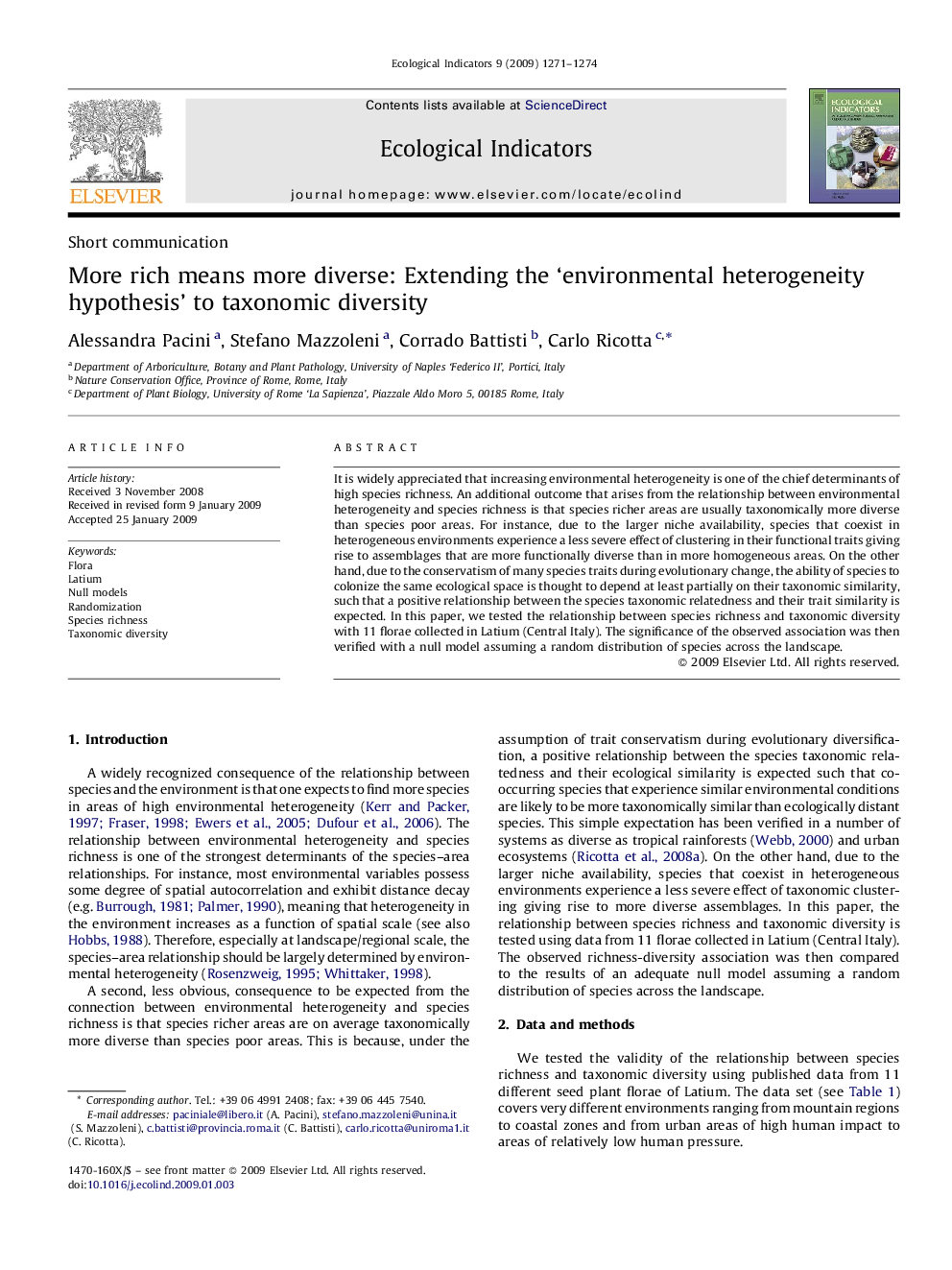| Article ID | Journal | Published Year | Pages | File Type |
|---|---|---|---|---|
| 4374356 | Ecological Indicators | 2009 | 4 Pages |
It is widely appreciated that increasing environmental heterogeneity is one of the chief determinants of high species richness. An additional outcome that arises from the relationship between environmental heterogeneity and species richness is that species richer areas are usually taxonomically more diverse than species poor areas. For instance, due to the larger niche availability, species that coexist in heterogeneous environments experience a less severe effect of clustering in their functional traits giving rise to assemblages that are more functionally diverse than in more homogeneous areas. On the other hand, due to the conservatism of many species traits during evolutionary change, the ability of species to colonize the same ecological space is thought to depend at least partially on their taxonomic similarity, such that a positive relationship between the species taxonomic relatedness and their trait similarity is expected. In this paper, we tested the relationship between species richness and taxonomic diversity with 11 florae collected in Latium (Central Italy). The significance of the observed association was then verified with a null model assuming a random distribution of species across the landscape.
